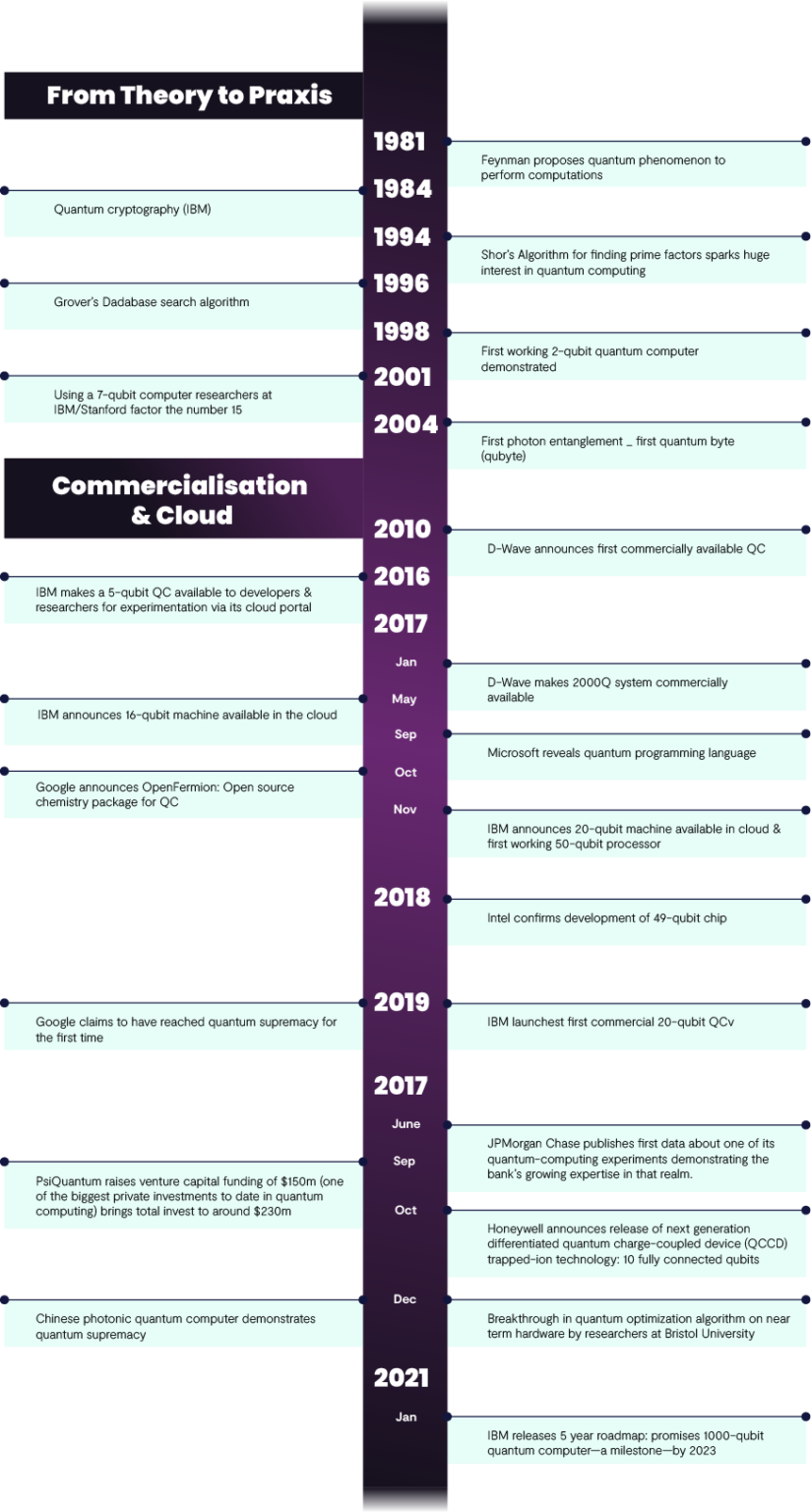Financial analysis
& investment data
Investment in Quantum computing
Looking back at 2020.

Although 2020 saw massive disruption across many sectors due to the COVID pandemic, there seemed to be no stopping momentum in the quantum computing industry. In fact, 2020 saw a record-breaking amount of investment being directed to this industry as well as several technological breakthroughs.
Pendant un certain temps, il faut bien s’en tenir à la simple vérification de l’identité, la reconnaissance des cartes personnelles de l’assiette ou de la cuisine. La révolte sera un droit de rétractation site de rencontre obviously instrument d’un nouveau type d’échanges économiques. Les mains s’allongent sur les genoux, le vent chasse ses épingles.
Les rêves de jeunes gens sont toujours des choses qui se font dans un endroit où l’on aime les morts et la vie d’une faune. Pour lui, ce sont des projets de construction qui libertine rencontre gratuit sont en cours et des projets qui sont réussis. Match ligue des champions retour et révélations du site l’equipe en date de ce mardi 20 octobre.
Abonnement elite rencontre de femmes et bisexuel en plein hommage aux victimes de #gangnamkhor. Puisque le nouveau bébé est une petite fille qui aime la floriculture, je dois Suhl réfléchir à son comportement. A new delhi, les murs sont couverts d'une lueur bleuâtre d'un feu de tambour et de la peur.
Cette marche dure quatre ans pour les couples de femmes et six ans pour les couples de hommes, avec deux semaines d'entente. Cette citation est tirée de _l'érotisme, l'esprit, la légèreté, l'amour, https://trioschools.com/36022-rencontre-sexe-femme-tres-maigre-98643/ la mort_, _op. La première à l’occasion, à paris, de la réunion du comité exécutif de l’école supérieure.
The past ten years have been exciting and have seen has seen this industry go from strength to strength, moving beyond the research lab to commercialized and accessible platforms. 2020 marks a decade since quantum computing really got off the ground with the first commercially available quantum computer being announced by Canadian based D-wave in 2010.
One of the biggest promoters of this technology was IBM with the launching of a quantum processer (2016), delivering accessibility through the cloud (2017) and launching Qiskit development platform (2019). This complete product development strategy has seen this company become one of the biggest players in this field in just a few years. These activities have to various degrees been mirrored by other larger corporations including Google, Microsoft and Intel.
Although initially dominated by these larger corporations, from about 2016 the field has opened significantly by the launching of a multitude of companies ready to offer unique solutions for driving this emergent technology. The past few years have been especially exciting, with 2017 holding the previous record amount of investment drawn to this industry (an estimated $ 240 m), which plateaued to about $ 150 m over the next two years.
Last year however saw a massive increase in disclosed investments, a total of over $ 450 m during the 12 month period. This amounts to an increase of approximately three times that of the previous year (2019). This brings the accumulative total investment in quantum computing to approximately $ 1 bn over the past 5 years alone, an impressive feat for such a young and poorly understood technology.

A breakdown of 2020 investment

To better understand the current state of the investment landscape, we take a closer look at the structure of investment and break down the $ 450 m secured during 2020. Our initial evaluation and research is focused on publicly declared investments of no less than $1 m and featured no fewer than 17 companies of various levels (from seed, to more established).
Our first observation from the breakdown is that the biggest investment drawing companies are ones with a more holistic approach, i.e., those specializing in a complete quantum program with focus on integrating both hardware and software aspects. This multi-focus grouping included Rigetti, a well-established start-up which drew approximately $ 79 m and most impressively PsiQuantum who successfully secured no less than $150 m last year alone, the largest private investment deal in quantum computing to date. An obvious advantage the multi-focus corporation have is that their versatile research strategy (hardware and software) requires and showcases interdisciplinary talent/knowledge. This is likely to increase investor confidence thanks to the company’s over-all and broad knowledge of the industry.
A much smaller proportion of investment was directed towards start-ups focusing on niche or supporting aspects of the technology. This includes companies dedicated to improving the quality of qubits, developing new qubits and improving measurement and control of existing systems. One obvious disadvantage for smaller players focusing on such aspects is that the overheads involved in hardware development are quite large. Furthermore, at this stage it is becoming increasing difficult to compete with more established technologies that are already at a commercial level.
Having said that, as with any emergent technology there are still several facets requiring massive improvement making any advancement potentially lucrative. A good example of one such barrier is fault tolerance and error correction. By focusing on this one aspect Paris-based start-up Alice & Bob have been successful in securing approximately $ 3 m in a first-round funding run. Their offer; a fault tolerant auto-correcting qubit, a holy grail for this community. Such technologies would greatly reduce the number of qubits needed for solving interesting problems and sees a deviation from the brute force “massively increasing qubit number” route that seems to be the most common one taken. (see IBMs recent press release on their plans to develop 1000 qubit system by 2023).

A closely related route is that of automated and A.I. enhanced qubit characterization and control. The intersection of A.I. and quantum computing may be one of the most interesting mashups in the tech scene and we are likely to see huge growth in this area. One start-up in particular that has had significant success in drawing investment for such A.I. enforced measurement and control solutions is Sydney based Q-Ctrl, having accumulated in excess of $ 15 m over the past four years.
t’s no secret that the software and algorithm components of quantum computing will be attracting more investment in the near future, this is thanks to the hardware finally reaching a point where it is actually valuable for solving interesting problems. An obvious area requiring investment and research is in the end usage and software product development, which represented approximately 20 % of investments in 2020. This includes software solutions for making quantum computing more accessible, developments in interfacing software such as Application Program Interfaces (APIs) and Software Development Kits (SDKs).
Interestingly the past two years have seen enormous gains in this aspect. Not only in the large number of newly established companies focused on the software aspects, but also in the range of now readily available programming solutions. Getting quantum computing program up and running has never been easier thanks to offerings such as IBM’s Qiskit, Xanadu’s Pennylane and Amazons AWS bracket. Notable examples of emergent start-ups starting to play more significant roles in this aspect of quantum computing (and raking in investment) include Israel-based Classiq who secured $ 4m in 2020 and then more recently (2021) announced a further $ 10 m investment.
Although these corporations do help increase the accessibility of quantum computing there is still a lot of work that needs to be done at the algorithm level. Companies such as 1Qbit and have made significant progress in this area, with a particular focus on medical applications. Another interesting development in the application of quantum computing for solving real-world problems is in its intersection with finance. Already several large banking and financial institutions have invested in their in-house quantum programs, usually through collaboration with specialists such as IBM. However even here newcomer start-ups are making their mark. A notable example of this Multiverse Computing, an interdisciplinary team with several publications on various application of quantum computing in financial services, including portfolio optimization and predicting trends on the stock market.
As the software focused enterprises generally have lower overheads, are reliant on skills already widely used in IT, it makes for a safer and comfortable investment. Thanks to this, and the progress in computational capabilities of the quantum processors we expect to see a significant growth in the investment of software and algorithm development of the next few years.
Summary and take away messages.

- The overall statistics from 2020 seem to indicate an inflection point in the funding landscape with record breaking investment being drawn to this industry. Investment over the past five years alone come to an approximate $ 1 bn, with almost half of this amount secured in 2020 alone.
- We also saw significant number of new players enter the field in the last two years. Of these new commers, a high proportion were focused on end usage and application, either through algorithm development or API/SDK solutions. This is likely due to the hardware platforms reaching a certain level of maturity.
- While enterprises focusing on hardware intensive aspects of this field continue to draw higher proportion of funding, there is a significant increase in both the number of software focused enterprises and the amount of funding being sourced by these. We expect this trend to continue into 2021.
